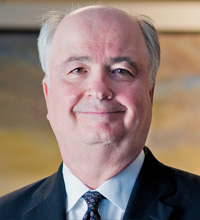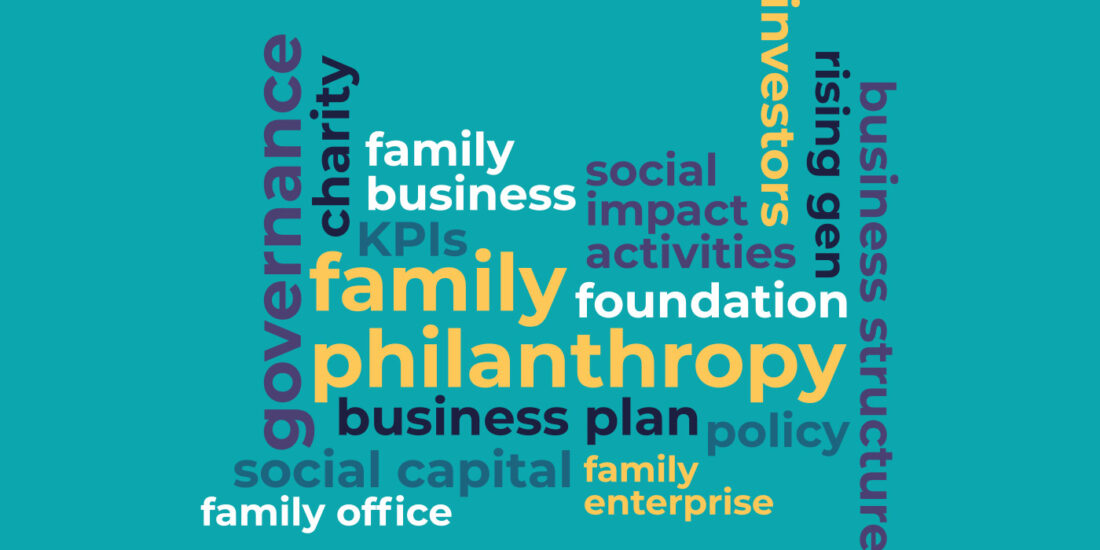Transformational Philanthropy? Lessons learned in the Riley Case
The Human Comedy
Sometimes, you set out to “transform” others and end up demonstrating how obtuse you actually are: “How can I have been so blind?”
The courses I teach in the Chartered Advisor in Philanthropy (CAP®) program at The American College of Financial Services land on a capstone case, “The Riley Case.” I developed the case with the intention of showing how “students,” mostly advanced planning professionals from law, accounting, and finance, but also nonprofit gift planners, could help business-owning families transform themselves, upon exit, into civic leaders. They would escort families “from success to significance,” as Bob Buford says, subordinating wealth to meaning, purpose, family harmony, and social impact.[i] In the end, it turned out that a nine-year-old child knows more about philanthropy that I do. Read the case facts below, consider your own and your clients’ planning routines, and see if you get transformed.
JD and Mary Riley
JD and Mary, age 70, are small town people, in Texas, who have done well in the masonry business. They have three grown children and seven grandchildren. JD built the business, and Mary is the comptroller. A son, Garret, is head of sales, but is not slated to own the business. Their local business, Ultrastone, Inc. is an S-Corp, $18 million, comprising almost 90% of their net worth. They have an IRA and a small investment portfolio, but like many business-owning clients, what they do not have much of is cash. They live on $20,000 a month after tax. They give away about $30,000 a year, with $10,000 being their biggest gift, and several charities getting $5,000 each. The $10,000 goes to a small volunteer organization that Mary credits with saving Garret when he was in high school, captain of the football team, and a partier who almost died in a car accident. She serves as chairman of the nonprofit’s board and is their largest donor. Other charities include their schools and house of worship. They say they would like to leave their estate 75% to heirs, 25% to charity, and 0% to estate taxes. Asked if they would like to give “now, later, or at death,” they say, “We would like to be giving while we are living, so we can see how it works, and so we can pass on family values to the children and grandchildren.” They are also concerned about taxes on the sale of the business, which they plan to exit in 1-3 years. (JD has been saying he will sell in 3-5 years for the last 20 years, but now buyers are circling, and it may finally be time to sell.)
Dave Holaday, ChFC®, CAP®, a nationally known financial planner, was asked to compute the Riley’s philanthropic life-time and testamentary charitable capacity, assuming they made tax-smart decisions, as they sold the business. What Dave was able to show is that the Rileys could reduce income taxes on the sale of the business by $1.5 million, reduce estate costs from $4.5 million to zero, and go from giving $30,000 a year to giving $450,000 a year to life expectancy. At their death, the children could continue to give that $450,000 for another 18 years, via a Charitable Lead Trust. All that without shortchanging any of their other goals.
Transformation of the Transformer
Now, here is the part that made me see the case with new eyes. I asked ten field leaders for a one-page reaction to it. I also presented it to estate planning societies, financial planning associations, and associations of philanthropic planners. The great majority of experienced advisors said that the plan is nearly perfect with only one defect: The Rileys will not sign it. They won’t sign, say these advisors, partly because the plan is so complex, but more importantly because the family simply does not yet have sufficient charitable passion or purpose to justify $450,000 a year in giving. The fifteen-fold increase in giving would leave them speechless.
The Philanthropic Learning Curve
Recognizing that the advisors were right, that the Rileys probably won’t sign, I recalled the philanthropic learning curve, as sketched by H. Peter Karoff.[ii]
- You become a donor.
- You decide to get organized.
- You become a learner.
- You become issues and results oriented.
- Your giving becomes leveraged.
- Your values, your passions, and your interests are aligned. Philanthropy is among the most exciting and satisfying things you do.
The Rileys are at level 1. The plan demonstrates that they could give at level 6, the level at which donor, family, and community are transformed. However, the Rileys are not there, and we have taken no steps to get them there.
Towards a Happy Ending, After All
Among the comments made by advisors were these: “Are we planning for the children, at the children, or with the children?” And, “What this family needs is a family meeting at the lake house to clarify what they are trying to accomplish, before they get their plans signed.” Both good points. So, imagine JD and Mary do meet at their lake house, to discuss giving with heirs. I can imagine that at that meeting a nine-year-old granddaughter says, “Hey Grandpa and Grandma, me and my brothers we want to save dogs!”[iii]
I would like to imagine that JD and Mary do sign off on their plan, that the grandchildren get $500 each to give to a charity that they have visited. Maybe next year the nine-year-old and her brother return to the family meeting and say, “We should not give to that pet shelter again, they did not do what they said they would do.” And now at age 10, the child is already at the stage where she knows that some gifts are disappointing, and that giving should get results, or the money is wasted. Imagine what she will know at age 11! By adulthood, she may have reached Peter’s level 6 in which her “values, passions, and interests are aligned,” and giving “is among the most the most exciting and satisfying” things she does. At age 21, I can hear that grown woman say, “Enough about me, my family, or our money, or our transformation! What about the needs of the community?”[iv]
So, imagining the maturation of that child, in a difficult world that she will make a little better, I am reminded of what I already knew, or should have known. How about you?
[i] Bob Buford, Half Time: Moving from Success to Significance (Zondervan, 2008)
[ii] H. Peter Karoff, “Reflections on the Lessons Learned from Two Decades of the Poetry and Practice of Philanthropy,” presented to Advisors in Philanthropy National Conference, 2011.
[iii] Adapted from an anecdote told by donors in Ronald Schiller’s, Belief and Confidence (CASE, 2015)
[iv] Speaking of transformational moments, this remark was made to the author in 2005 by Tracy Gary, author of Inspired Philanthropy: Creating a Giving Plan and Leaving a Legacy (Jossey-Bass, 2008). She was raised as an heir in a dynastic, family. Her parents would tell her, “Other kids volunteer one day a week, you will volunteer two days. You have more, you will do more.” Seeing philanthropy through her eyes, I saw how blind I had been thinking it was all about “values-based planning.” As often as that lesson is learned, how easily it is forgotten when, as advisors, we are wrapped up in solving financial equations, or working with the family, and its “four capitals,” as if the world revolved around the client. Philanthropy connects not only to results, and to ego, or family values, but to love. And that love may include us all, rich or poor, as the sun shines on all, and the rain falls on all.
About the contributor
 Phil Cubeta, CLU, ChFC, CAP, is Sallie B. and William B. Wallace Chair in Philanthropy and an assistant professor of philanthropy at The American College of Financial Services in Bryn Mawr, PA. He can be reached at Phil.Cubeta@theamericancollege.edu.
Phil Cubeta, CLU, ChFC, CAP, is Sallie B. and William B. Wallace Chair in Philanthropy and an assistant professor of philanthropy at The American College of Financial Services in Bryn Mawr, PA. He can be reached at Phil.Cubeta@theamericancollege.edu.




